Policing Gender Boundaries: Testosterone, sex-testing, and human rights
IOC, IAAF, UCI guidelines highlight the need for science and education
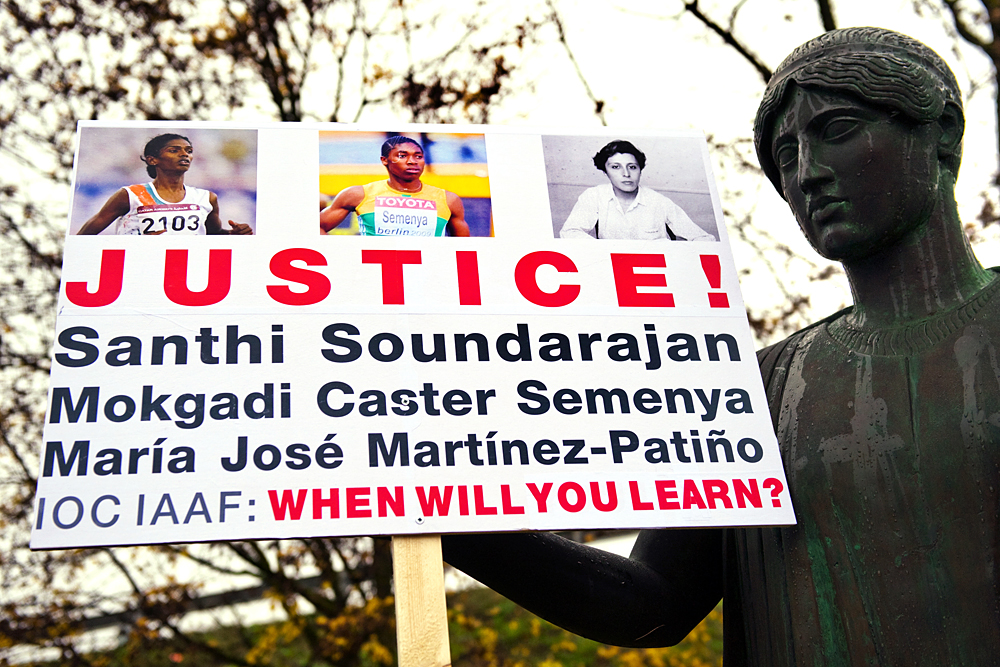
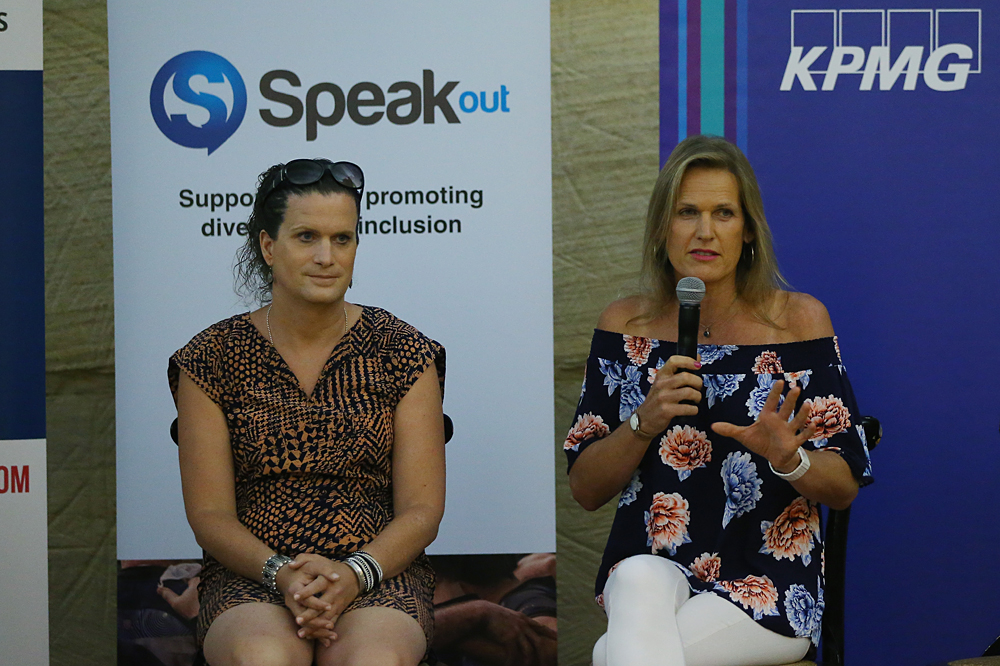
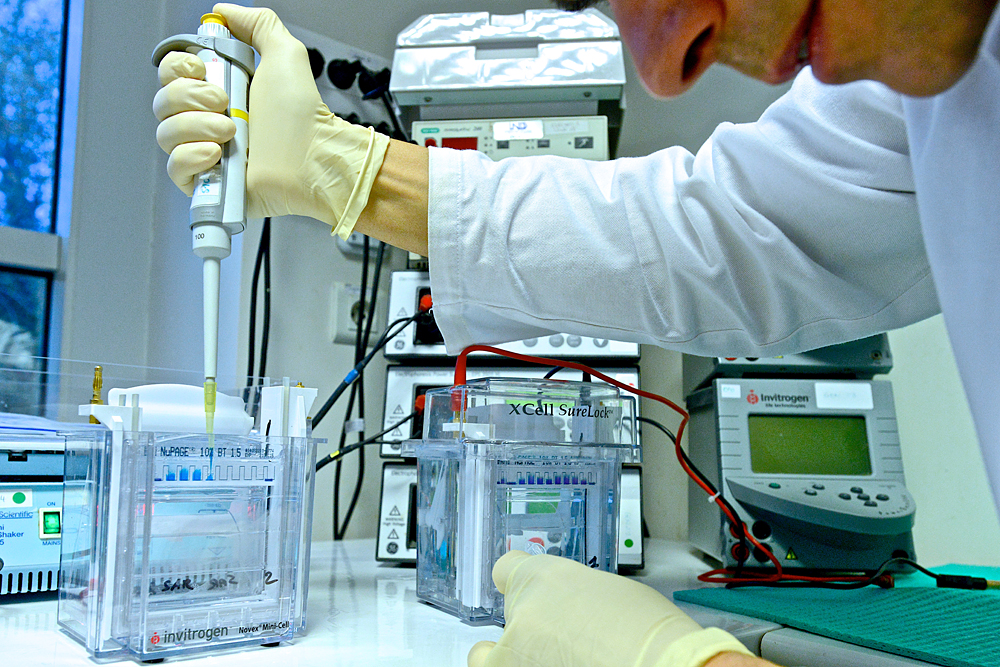
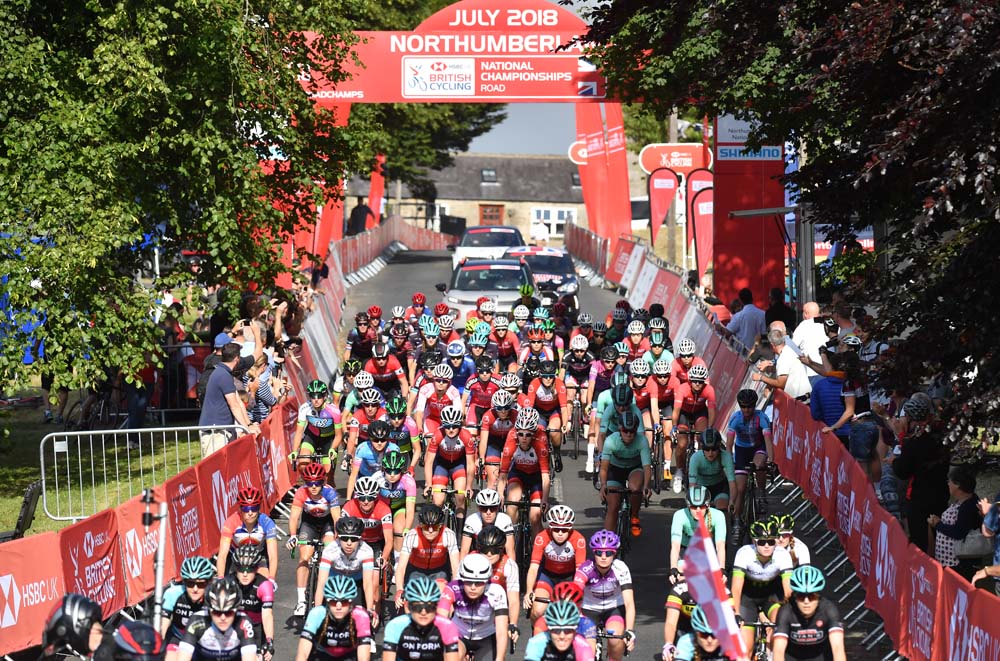
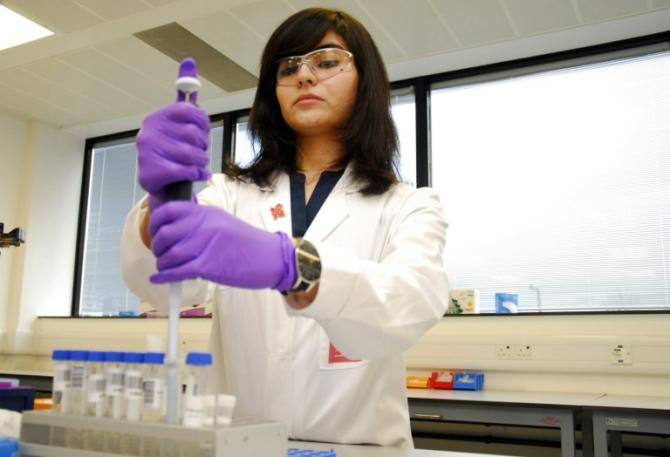
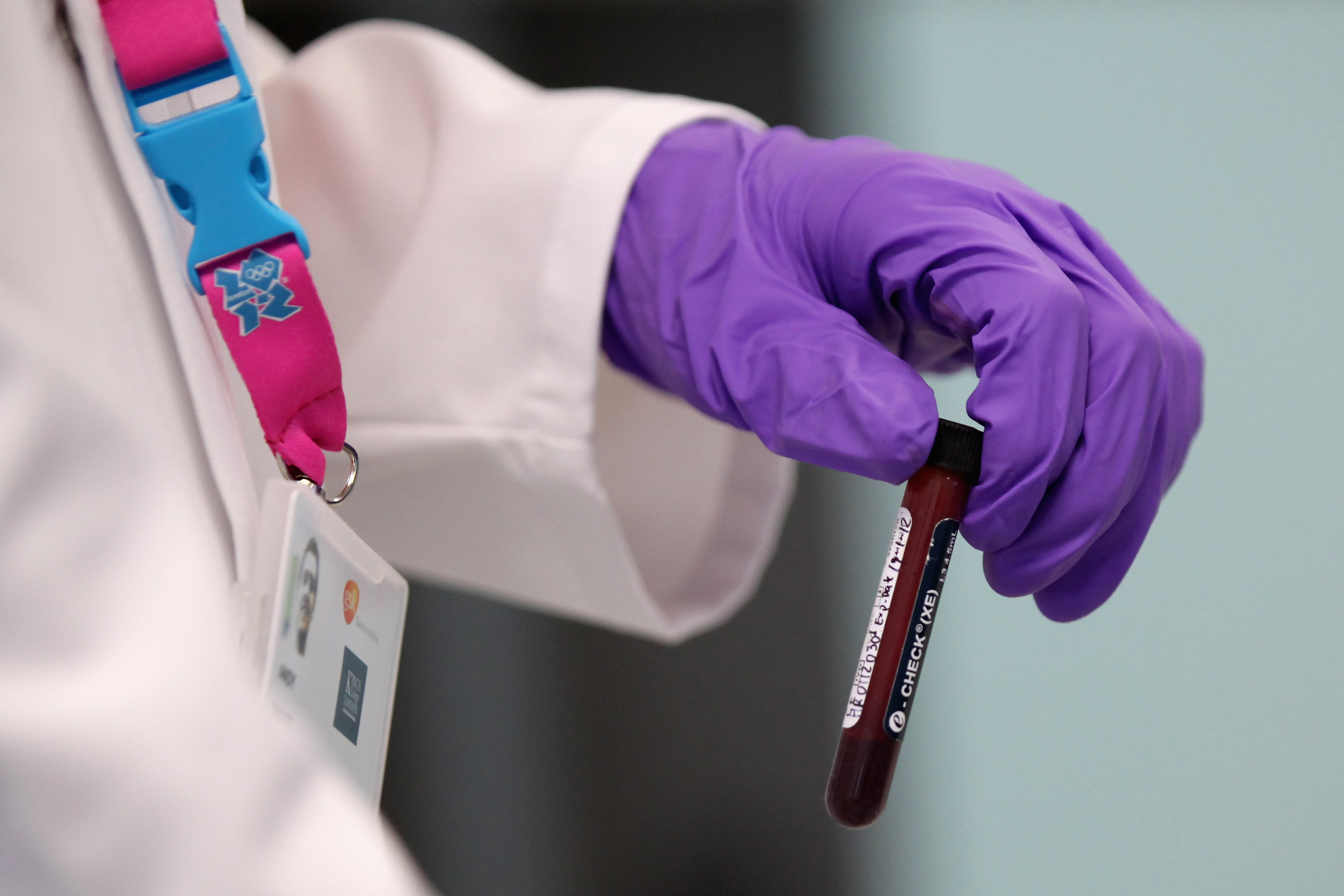
At a time in professional cycling when parity between the men and women is front and centre, the spotlight has shifted onto the debate concerning the inequalities within the women's category of sport.
There's a controversial notion – increasingly evident at the high-performance level – that not all women are considered equal, whereby governing bodies decide who, among the infinitely diverse category of women, is allowed to compete and who is not.
The sports world has been holding its breath, awaiting the announcement of two important decisions made by the International Olympic Committee (IOC) and the International Association of Athletics Federations (IAAF).
On the surface, they both intend to protect competitive fairness for women. However, diving deeper into the debate reveals that they also affect diversity and the human rights of female athletes, and that includes the sport of pro cycling.
Transgender and hyperandrogenism guidelines
The IOC introduced an updated version of its 'transgender and hyperandrogenism' guidelines, which govern transgender females and females born with higher levels of testosterone due to differences of sex development (DSD or hyperandrogenism). These two groups have been the subject of controversy in sport for over seven decades. The IOC is expected to be coming out with new rules for transgender females who wish to compete in the women's category.
Also, the Court of Arbitration for Sport (CAS) announced its verdict in the Caster Semenya vs. International Association of Athletics Federations (IAAF) case on Wednesday. It was an appeal over the IAAF's new regulations that decide the eligibility and legality of females who have higher testosterone levels – due to one of seven differences of sex development (DSD) – to compete in the women's category of Athletics. The IOC and IAAF refer to females with hyperandrogenism conditions as 'intersex' or DSD athletes. The IAAF moved to restrict these individuals from competing in events from the 400 metres to the mile.
After lengthy deliberation, Semenya lost the landmark case against the IAAF, and the sport's governing body will be allowed to restrict testosterone levels to 5 nmol/l in DSD athletes who race in certain events. Even though the CAS ruled in favour of the IAAF, it also said that it had "serious concerns" about the application of the new regulations. It found that the new rules were discriminatory towards DSD athletes, but that the discrimination was "necessary, reasonable and proportionate" to protect "the integrity of female athletics", as reported on BBC Sport.
Get The Leadout Newsletter
The latest race content, interviews, features, reviews and expert buying guides, direct to your inbox!
Following the publishing of this story, the IAAF provided Cyclingnews with the CAS' executive summary of the case.
The IOC is the uppermost governing body that sets the guidelines for athletes competing in Olympic sports: everything from track and field to cycling. Its most current recommendations, revised in 2015, are called the 'IOC Consensus Meeting on Sex Reassignment and Hyperandrogenism'. These guidelines are adopted by international federations (IF), such as the International Cycling Union (UCI).
It's fair to question what the IOC's new transgender guidelines have to do with the IAAF's new regulations for DSD athletes. And what do either of them have to do with cycling?
The rules
As of 2019, the IOC set the maximum limit of testosterone for transgender females at 10 nmol/l (Cyclingnews understands that this could change to 5 nmol/l in future). These individuals must keep their testosterone levels down for one year before being permitted to compete. They must also undergo frequent testosterone checks throughout their careers.
The IAAF initially regulated testosterone levels for DSD athletes at 10 nmol/l, too, but the CAS suspended those rules after an appeal from Indian track and field sprinter Dutee Chand in 2015. She argued they were discriminatory against women and unsupported by scientific research.
The CAS gave the IAAF two years to come up with scientific evidence to back up its reasons for creating testosterone limits for women in their sport.
The IAAF came back with new regulations last year, except it further reduced, by half, the testosterone limits for DSD athletes to 5 nmol/l. It believes that individuals who have natural testosterone levels higher than the average healthy female (0.4 nmol/l to 2.0 nmol/l), and whose androgen receptors can uptake the testosterone, have an unfair advantage over peers in their category.
The new rules will force DSD athletes to medically lower their testosterone if they wish to continue competing in the women's category in certain events of Athletics. The evidence to support this new regulation, based on a study that apparently showed performance advantages for certain track and field events (which has been argued to be flawed), is what was deliberated over at the CAS in the case of Semenya vs. IAAF.
Following CAS' verdict, the World Medical Association has advised physicians around the world not to take part in implementing new eligibility regulations for classifying female athletes. WMA President Dr. Leonid Eidelman said: "We have strong reservations about the ethical validity of these regulations. They are based on weak evidence from a single study, which is currently being widely debated by the scientific community."
Cyclingnews understands that the new transgender regulations will be different from those applied to DSD athletes. But the CAS verdict that will allow the IAAF to implement new regulations for DSD athletes will give an idea of the admissibility of eligibility regulations based on maximal plasma testosterone limits for the transgender and hyperandrogenism rules.
Directly following the CAS verdict on Wednesday, Cyclingnews asked the IOC if the IAAF's new regulations for DSD athletes will affect the sport of cycling.
"We have taken note of the CAS decision in this case and recognise these issues are complex," said a spokesperson from the IOC. "The IOC is currently working with a group of experts on the creation of guidelines to help international federations shape sport specific policies and regulations in relation to fairness, safety, inclusivity, and non-discrimination on the basis of gender identity and sex characteristics."
The policy structured around what types of women can compete in sports is continuously evolving. The IOC's current transgender and hyperandrogenism guidelines replaced the controversial 2003/04 Stockholm Consensus that required transgender females to undergo sex-reassignment surgery if they wanted to partake in women's-category competition. Such individuals were also forced into humiliating forms of gender verification processes to obtain licences under their sporting federations.
The IOC faced criticism over recommending athletes undergo irreversible surgeries if they wanted to participate in Olympic sporting events. It has also been heavily criticised for creating guidelines that are not supported by objective scientific research or expert knowledge of the physiology of such individuals, which in some cases has led to serious health consequences.
"Since the 2003 Stockholm Consensus on sex-reassignment in sports, there has been a growing recognition of the importance of autonomy of gender identity in society, as reflected in the laws of many jurisdictions worldwide," a spokesperson of the IOC told Cyclingnews. "To require surgical anatomical changes as a pre-condition to participation is not necessary to preserve fair competition and may be inconsistent with developing legislation and notions of human rights."
The critical point is that it's more than a sporting or testosterone issue; it's also a human rights issue. Canadian cyclist and human rights activist Kristen Worley detailed her experiences with gender verification and human rights laws in her recently-released memoir. Her book was co-authored by Johanna Schneller and titled 'Woman Enough: How a boy became a woman and changed the world of sport'.
Worley sat down for an interview with Cyclingnews in Toronto, where she spoke about the lack of scientific research behind the IOC's and the IAAF's guidelines, along with her own experiences with gender verification and knowledge of testosterone uptake. You can listen to our Cyclingnews Women's Edition Podcast - What makes a woman?
Human rights
In 2015, Worley challenged the IOC, along with the World Anti-Doping Agency (WADA), the UCI, Cycling Canada (CC) and the Ontario Cycling Association (OCA), outside of the CAS, in the court of civil law at the Superior Court of Justice and then the Ontario Human Rights Tribunal in Toronto. Her case brought attention to the lack of scientific research behind the policies, practices and protocols for these individuals. She also demonstrated how the IOC's guidelines filter down through the international federations (UCI) and into the national (CC) and provincial (OCA) rules, affecting athletes at the lower levels of sport.
Worley fully transitioned, having undergone sex-reassignment surgery, in her late 20s. Her transition process took roughly five years. She has neither testes nor ovaries, so her body doesn't produce an adequate amount of hormones necessary to be a healthy individual. For health purposes, on multiple occasions she requested a Therapeutic Use Exemption (TUE) to take medically-administered testosterone, but the process took nine months, as opposed to the usual two or three weeks. Worley's health waned, and she was forced to stop competing.
"The policies that were created by the IOC were generated by a handful of individuals at the IOC Medical Commission and were not a scientific statement. It was a statement to procedures. It helped nations look at the ideals of being able to create recommendations for athletes who transitioned to be able to participate in sport. There was no scientific evidence to the paperwork or policies that the IOC was putting forth through the Olympic movement," Worley told Cyclingnews, referring to the Stockholm Consensus.
At the Human Rights Tribunal, two sets of mediations with the UCI, CC and the OCA led to a settlement agreement that included advocation for individualised TUEs for transitioned athletes. It also included advocating for the establishment of standards and guidelines related to transgender athletes based on objective scientific research. The sport's governing bodies must now review and revise internal policies to embrace human rights, and launch awareness and education related to diversity of participants.
At the international level of cycling, the UCI agreed to support an advocacy initiative to encourage sport's governing bodies, at the highest level, to adopt policies and guidelines that are based on objective scientific research and that are responsive to the individual needs of transgender female athletes.
Concerning the settlement agreement, Worley's advocacy message has indeed been sent up the pipelines to the IOC. Cyclingnews understands that the guidelines are being revised again. The IOC and the UCI claim that they have evolved based on medical expertise and scientific research, although they have not paid credit directly to Worley's case.
"Our approach to providing guidance on participation is based on medical and expert consensus in an ever-evolving area of research and learning," a spokesperson at the IOC told Cyclingnews. "Therefore, we are constantly reviewing our guidance in a process led by the Medical and Scientific Commission, informed by inputs from the Athletes Commission, the Women and Sport Commission, and outside experts. The guidelines are being developed in light of legal, medical, and scientific developments as well as the IOC's advancement in understanding its responsibilities in regard to respecting human rights."
Cyclingnews requested from the IOC examples of the objective scientific research along with the medical expert advice used to determine both the current and soon-to-be-released transgender and hyperandrogenism guidelines, which they did not provide. Cyclingnews understands that the review of the matter at the CAS, concerning DSD athletes, was based on a study from the Endocrine Reviews, Volume 39, Issue 5, October 2018.
The IOC reminded Cyclingnews that its guidelines are voluntary and that it is up to each international federation, such as the UCI, to decide eligibility rules for their sports, disciplines and events.
Cyclingnews also understands that the UCI Medical Commission supports and chooses to adopt the IOC's transgender and hyperandrogenism guidelines. The UCI believes the proposal to be the result of extensive exchanges of information and input, and sees it as a chance to benefit from collective work.
It is worth pointing out that all national federations that are governed by the UCI, such as Cycling Canada and USA Cycling, are required to follow the transgender and hyperandrogenism guidelines for athletes and events licensed under the UCI, but rules are more lenient for athletes who compete at the lower levels of the sport.
"After some two years of substantial work, including consultation with international federations, the International Olympic Committee (IOC) is about to release new guidelines covering the participation of transgender athletes, including transgender female athletes, which will not provide for differentiation between disciplines," a spokesperson at the UCI told Cyclingnews.
"This document should enable us to take into consideration, in line with the evolution of our society, the desire of people to compete, while at the same time guarantee as far as possible an equal chance for all participants in women's competitions.
"The UCI is awaiting the upcoming release by the IOC of the new regulation that takes into account the most recent scientific and medical advances, to which our federation has contributed.
"To avoid any confusion, to date, the UCI has not considered specific eligibility rules for DSD female athletes for cycling competitions," the spokesperson said.
However, as the CAS announced its verdict on the IAAF's new regulations for DSD athletes, and as the IOC's updated transgender guidelines loom, Worley is not convinced that the IOC or the IAAF have created them based on new scientific research or medical expertise.
"They are being very dishonest," Worley told Cyclingnews. "There is no science and research to any of it."
Worley was satisfied that her case led to a more informed discussion about science and diversity in sport. She also saw it as a win that her advocacy message was heard at higher levels within the sport.
Cycling Canada confirmed to Cyclingnews a list of areas of changes following the settlement. It included panelled discussions on diversity, a review of the OCA's Code of Conduct and Ethics to ensure it complies with Ontario Human Rights Code, and policy changes were made and posted on its website and discussed at OCA official meetings with project coaches and staff. Also, the OCA does not verify gender at the time of application, and transgendered athletes race in their chosen or identified genders.
The four elements to the changes included education on bullying, abuse, harassment and discrimination. "This initiative originated from the Worley case and also our desire to provide additional ethical training," a spokesperson from Cycling Canada told Cyclingnews.
Disappointed that the sport's policies are not created on objective, peer-reviewed science at the IOC level, Worley wrote in her memoir, "Did we get everything we wanted? 'No.' We gave a little, and they gave a little. But we kept inching forward. We made people talk about it. We chipped away at their biases, got them to think about their knee-jerk responses: Why you think that a woman being healthy is a competitive advantage?"
Worley currently gives educational discussions around the world on the subject of diversity and inclusion in sport. She also acts as a consultant on human rights to The Cyclists' Alliance founded by Iris Slappendel.
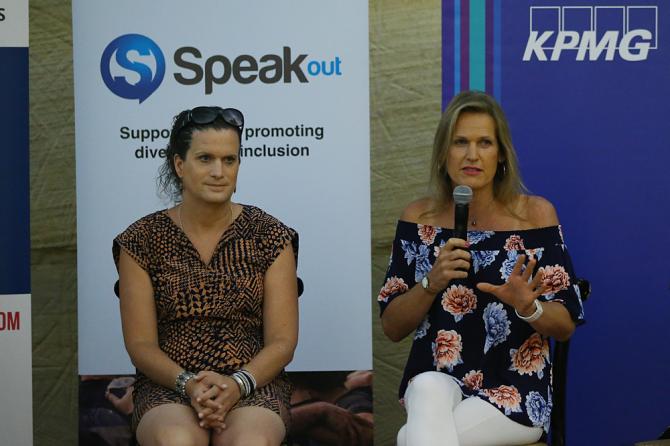
Testosterone
Testosterone is part of the discussion surrounding the IOC's transgender and hyperandrogenism guidelines.
Olympic sports are constructed on a traditional gender-binary system – XX female and XY male – and athletes who fall outside of those two boxes have had to push for non-binary inclusion at both the local and high-performance level of sport. The ICO also considers its women's category to be 'protected' due to the physical advantages in strength, speed and endurance of men, primarily because of higher circulating testosterone after puberty, which can be 15-fold that of women.
Some athletes are supportive of the inclusion of transgender female and DSD athletes in their sport. Others believe that such individuals have an unfair advantage over their peers who have lower testosterone. Some also believe that the current transgender guidelines that set testosterone limits at 10 nmol/l aren't fair because it's too high above the testosterone range for healthy women.
The debate flared up within cycling last October when track cyclist Rachel McKinnon won the world title in the women's sprint at the UCI Masters Track World Championships. McKinnon is registered as a female athlete with a category 1 licence (elite level), and so she is obliged to follow the IOC/UCI guidelines. USA Cycling confirmed to Cyclingnews that McKinnon has followed the rules and that she has every right to compete.
Worley believes that it's possible for both sides of the heated argument to find common ground through education.
"It comes down to education – bottom line," she told Cyclingnews. "When it comes to some of the athletes who are getting upset, I don't blame them. Although some of the comments are harsh and in some ways inaccurate, I don't blame them because it's a lack of understanding. It comes down to the fact that the IOC never bothered to do scientific research in the first place."
Studies have shown that, in non-athletes, testosterone levels for females have a range of between 0.4 nmol/l and 2.0 nmol/l, while healthy male testosterone levels range between 7.0 nmol/l and 30 nmol/l, showing a clear gap between the two. In the world of sports, however, the lines are blurred because elite female athletes' levels can reach as high as 7.7 nmol/l, in a study titled 'Endocrine profiles in 693 elite athletes in the post-competition setting'.
The IAAF pointed Cyclingnews to a dispute to the aforementioned study in the Science Media Centre, which is not a study but rather a response from Prof Ieuan Hughes, Paediatric Endocrinologist and Emeritus Professor of Paediatrics, University of Cambridge. According to the IAAF, the response underlines that there is a variety of scientific opinion on the specific issues surrounding DSD athletes.
Worley explained some of the science has shown that sensitivity to testosterone is an individual response based on a combination of one's chromosomes, DNA and receptor sensitivity, and that an XX individual is typically more sensitive to testosterone than an XY individual.
"A receptor complex that is more sensitive to testosterone can also be seen as 'unfair'," she said. "A receptor complex that is less sensitive to testosterone needs more testosterone to function in a 'normal way', whereby lessening an athlete's testosterone can have negative health consequences, making sports participation eventually impossible, as body metabolic function slows down or even ceases due to lack of androgen stimulation.
"Individual sensitivity to testosterone is not easy to determine, whereby creating an umbrella determination of hormone levels in sport is scientifically incorrect, unethical and potentially in breach of human rights law."
Testosterone levels are not the only determining factor in measuring the success of an athlete. Things like opportunity, funding, coaching and training, and psychology also have an impact on performance. All of these factors make the IOC's limit of 10 nmol/l for transgender females athletes, and the IAAF's new limit of 5 nmol/l for DSD athletes, seem arbitrary.
But sport has a big problem with testosterone, and that's because of the drug's anabolic properties that increase strength and recovery and enhance athletic performance – precisely the reason it's on WADA's list of banned substances.
What is less certain (and also concerns individual sensitivity to testosterone, as mentioned above) is the extent to which an individual's higher levels of naturally occurring testosterone affect athletic performance compared to their peers – as is the case with DSD athletes compared to women whose testosterone levels fall within the normal range.
When considering transgender females, individuals who have not undergone sex-reassignment surgery must reduce their testosterone levels to the lower end of the healthy male range of 7.0 nmol/l to 30 nmol/l. This is now accomplished through the use of testosterone blockers. Transitioned females who have undergone complete sex-reassignment surgery, and whose bodies, therefore, do not produce testosterone, are now permitted a TUE to take synthetic hormones based on a medical need to maintain normal health.
On the other hand, transgender males can compete in the men's category without restriction, and are also permitted the use of medically administered testosterone through the TUE process with no upper limits.
In the case of DSD athletes, the IAAF now deems such individuals to be 'intersex' if they produce natural testosterone higher than 5 nmol/l and are highly sensitive to that testosterone. Under the new regulations, females who were born with one of seven DSDs must now restrict their testosterone levels to 5 nmol/l or less if they want to compete in the women's category in certain Athletics events. The IAAF has argued that the limit aims to include athletes who are born with conditions such as polycystic ovarian syndrome, but to exclude DSD athletes, to protect fairness in women's-category events.
Update: The UCI introduce stricter requirements for transgender female athletes to compete in the women's category, with the testosterone threshold reduced to 5nmol/l in updated 2020 guidelines.
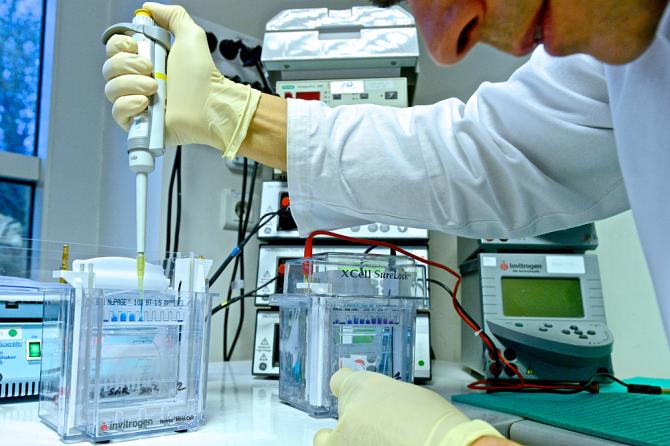
The grim history of sex-testing
The IOC and the IAAF have a long and controversial history of policing women in sport. Sex-testing is how sport governing bodies determine who is eligible to compete in women's high-performance competition, and who isn't. It's not a new concept, and it's a shady business. The practice has been referred to by athletes and external bodies, such as the United Nations, as humiliating and, in many ways, it has been seen as a physical and psychological violation of female athletes.
The United Nations has decried the IAAF's new regulations for DSD athletes as being a violation of human rights. In light of Semenya's case, it released a statement in response to testosterone reduction, asking sports governing bodies "to refrain from developing and enforcing policies and practices that force, coerce or otherwise pressure women and girl athletes into undergoing unnecessary, humiliating and harmful medical procedures in order to participate in women's events in competitive sports."
The practice of gender verification has reared its ugly head again because of high-profile human rights cases like Worley's and Semenya's. But sex-testing, in its various forms, dates back more than 70 years. It started with the so-called 'nude parades’, whereby women had to remove their clothing while a panel of doctors looked at their genitalia to visibly determine whether they were women.
The IAAF began policy-driven sex-testing female athletes in the 1950s, and the IOC followed with its gender verification process that was first introduced at the Olympic Games in the summer of 1968. Earlier practices typically involved mandatory physical examinations but later included XX vs. XY chromosome testing – all intended to catch men trying to pass off as women to win medals.
"All women used to be gender tested," Worley said. "And they used to give all female athletes a gender card with her photo, her nation, age and sport on it. She was approved for her gender. When you think about that process at an ideological level, it's so unethical, and a backwards way of thinking."
The fact is that not all women's bodies are equal – not in sport, and not in the real world. There are myriad individual variations of sex development. Some women have XX chromosomes and ovaries but ambiguous genitalia. Some women are born with XY chromosomes and have testes hidden in the abdomen, and they are either sensitive or insensitive to the higher testosterone levels, but they otherwise develop as female bodies. And some women are born with XY chromosomes and male genitalia, but identify as being female. Moreover, there is the basic understanding of XX chromosomes and XY chromosomes, but there can, in fact, be upwards of nine other variations.
High-profile cases that hit the mainstream media refuel the debate around the controversial practices of gender verification in sport. Indian track and field athlete Santhi Soundarajan found out she had 'failed' a sex-verification test on TV and was subsequently stripped of her silver medal won at the 2006 Asia Games in Doha. She was later reported to have attempted suicide the following year under the embarrassment of her highly publicised medical condition.
Indian track and field sprinter Dutee Chand underwent chromosome analysis, ultrasound scans, and gynaecological exams that included what she called a "mortifying" protocol of "palpating the clitoris, vagina and labia to evaluate the effects of high levels of natural testosterone," as reported in a detailed history of sex-testing in The New York Times.
The process of physical, gynecological, and ultrasound imaging are to determine physical signs of having a DSD, which has been viewed as "unreliable and inappropriate", according to a study in the British Medical Journal (BMJ).
Semenya was sex-tested in 2009, and her results were leaked to the press. She has faced a 10-year battle to continue to compete, with her recent appeal against the IAAF's new regulations deliberated on at the CAS more than a decade after she first faced public scrutiny over her gender. After losing that battle at the CAS, Semenya released a statement that read: "For a decade the IAAF has tried to slow me down, but this has actually made me stronger. The decision of CAS will not hold me back."
Worley played a consulting role as part of Semenya's legal team back in 2009. She told Cyclingnews that "Caster's case is a human rights violation. She is a healthy athlete. It's not that she's enjoying unnatural levels of testosterone in her body. That's just her normal.
"It's a human rights issue because when you take someone out of their healthy normal, by delineating their health and comparing it to someone who has a lower normal level of natural hormone as their normal... To delineate that as being some kind of equal is inhumane, let alone unethical."
The practice switched from looking for XY chromosomes to testing for high levels of testosterone in order make the distinction between women. Those found with DSD variations were then forced to reduce hormone levels either by removing undescended testes or taking medication. In some cases, the guidelines have led to athletes feeling coerced into unnecessary surgeries.
That was the case for four unnamed young female athletes aged 18-21 from developing countries who had surgeries to remove undescended testes along with recommended 'feminizing' reconstructive surgery, after being identified as having hyperandrogenism at the 2012 London Olympic Games, a detailed report of which is available in The New York Times, but also circulated the headlines after the Games.
As mentioned above, Chand appealed to the CAS, and the former hyperandrogenism part of the rules have since been suspended.
It's no longer mandatory that all female athletes be subject to gender verification testing. Individuals are now picked based on suspicion of having DSD traits. Among the list of high-profile cases above, none are white. That leaves some suspecting that gender verification practices have not only been discriminatory against female athletes, but that they are also inherently racist.
Under the IOC's Stockholm Consensus, transgender females would have had to undergo sex-reassignment surgery and two years of hormonal therapy in order to compete. To acquire a licence to race, Worley, who had already undergone sex-reassignment surgery, had to go through the gender verification process, which she said was conducted by two panels of men who were members of both Cycling Canada and the Canadian Centre for Ethics in Sport (CCES).
The groups reviewed an affidavit from a surgeon and a doctor following a gynaecological exam, personal files from her psychologist, and questions about her sexual orientation (entirely unrelated to sport). She detailed the process in her memoir and wrote that her records, which were supposed to remain private, were shared among multiple panels of individuals from other sport governing bodies.
"I was put through the physical piece as much as the psychological piece," Worley said. "These were reviews being generated and coordinated by these groups of men who had no background in this space whatsoever, but they felt that they could do these things to me and that they had a right to do these things to me because the IOC had put out these policy statements. They assumed that I was somehow a threat to sport. It goes one step further – they felt that I deserved it."
Square peg, round hole
Even today, DSD athletes and transgender female athletes face intense scrutiny from both their athlete peers and from the public. McKinnon's victory at the World Championships was heavily publicised in the international press, and she faced a mob of hateful, offensive comments by the thousand. She later wrote an opinion piece in the Washington Post detailing her experiences.
These cases raised a question mark over the Olympic Movement, which outlines the practice of sport as being a human right. "Every individual must have the possibility of practicing sport, without discrimination of any kind and in the Olympic spirit, which requires mutual understanding with a spirit of friendship, solidarity and fair play," reads the Olympic Charter.
Although that suggests that the ICO welcomes diversity, Worley believes that, when it comes to the diverse category of female competition, the IOC hasn't entirely given up outdated science and old ideologies, and that it has a long way to go to catch up with the rest of society.
"They're chasing an old ideology, trying to fit a square peg into a round hole, and it's splintering all over the place," Worley said. "It all comes down to education. We create these physical boxes to try to make people feel different, and that somehow we need to resolve this by wrapping policy around it, rather than changing our behaviours.
"In the ideals of human rights, to create policy under the concept of inclusion is unethical. They're churning an environment of accommodation, not inclusion – two very different things."
Update: The UCI’s most recent transgender guidelines came into effect in 2022 - stipulate that transgender women athletes must declare that their gender identity is female, demonstrate that their total testosterone level in serum has been below 2.5 nmol/L for a period of at least 24 months, and then remain at 2.5nmol/L throughout the period of desired eligibility to compete in the female category.
International Federations World Athletics and World Aquatics guidelines - transgender women who have gone through male puberty can no longer compete in the female category at international events.
World Athletics guidelines for DSD athletes updated in 2023 - require any relevant athletes to reduce their testosterone levels below a limit of 2.5 nmol/L for a minimum of 24 months to compete internationally in the female category in any event, not just the events that were restricted (400m to one mile) under the previous regulations.
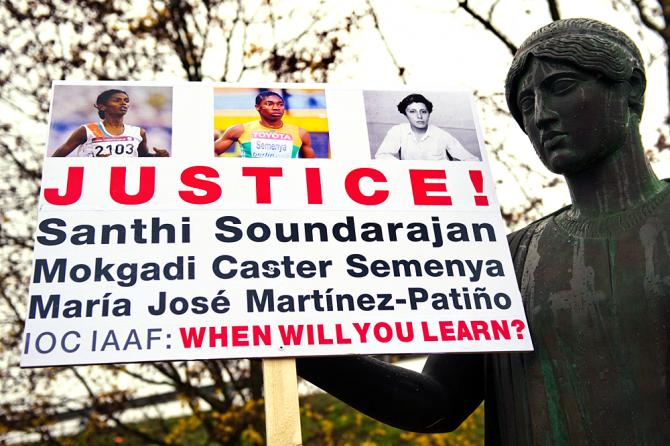
Kirsten Frattini is the Women's Editor at Cyclingnews and holds a volunteer seat as the Chairperson of the High Performance Committee at Cycling Canada for a two-year term ending in 2020

Kirsten Frattini is the Deputy Editor of Cyclingnews, overseeing the global racing content plan.
Kirsten has a background in Kinesiology and Health Science. She has been involved in cycling from the community and grassroots level to professional cycling's biggest races, reporting on the WorldTour, Spring Classics, Tours de France, World Championships and Olympic Games.
She began her sports journalism career with Cyclingnews as a North American Correspondent in 2006. In 2018, Kirsten became Women's Editor – overseeing the content strategy, race coverage and growth of women's professional cycling – before becoming Deputy Editor in 2023.